Usually, anyone seriously considering buying an aluminum yacht should have some “bigger” plans than just occasionally cruising around. Acquiring a sailboat to being mostly used in coastal areas and only for a few vacation weeks a year, yachts made from GRP are for most of the use-cases completely sufficient. Even if you’re planning to cross the “big pond”, a plastic boat will do just as fine. But if your intent to sail in remote areas, even more to acceot the challenges of the high latitudes, safety should play a much bigger role in your purchase decision. For voyages we often call “expeditions”, whether it is the Arctic or Antarctic, or in areas with ice drift and growlers, aluminum should be the material of choice. That´s a no-brainer, right?

This article was initially made for one of my clients, the German dealer for Allures and Garcia Yachts. But I found it so compelling and interesting, that with his confirmation, I was allowed to re-post the English version here on NO FRILLS SAILING. That said, I spoke with an absolute expert for building aluminum hulls. Antonio Garcia works for Grand Large Yachting, the shipyard that builds Garcia and Allures as well as RM Yachts or Outremer Catamarans. Antonio was eager to share his decades of experience and high expertise in the field of aluminum boat construction. My idea was, rather than doing a classic interview-style, to first collect the most frequent and thus most important asked questions that the Garcia/Allures dealer is receiving in connection with aluminum. Buckle up, this is now a detailed excursion into material science and modern boatbuilding …
There is no “cheap” or “much better” grade of aluminum in the first place
One of the most frequently asked questions evolves around the quality of the alloy utilized by the shipyards. We often hear about “cheap Chinese steel” or “Indian bargain steel”, so maybe there are different sources for aluminum and also differences in the quality of the metal? Is there “high-quality” or also “cheap” aluminum? I asked Antion if one could, similar to other materials, divide aluminum into different “grades” and what would those differences, perhaps in terms of corrosion, stiffness, or fracture resistance be? Antonio says: “Yes and no. Basically, aluminum alloys are divided into “series”. We distinguish between 1000, 2000, 3000, etc., up to the 6000 series. These alloys can indeed be divided according to their intended area of use and purpose, as they have different material properties.”
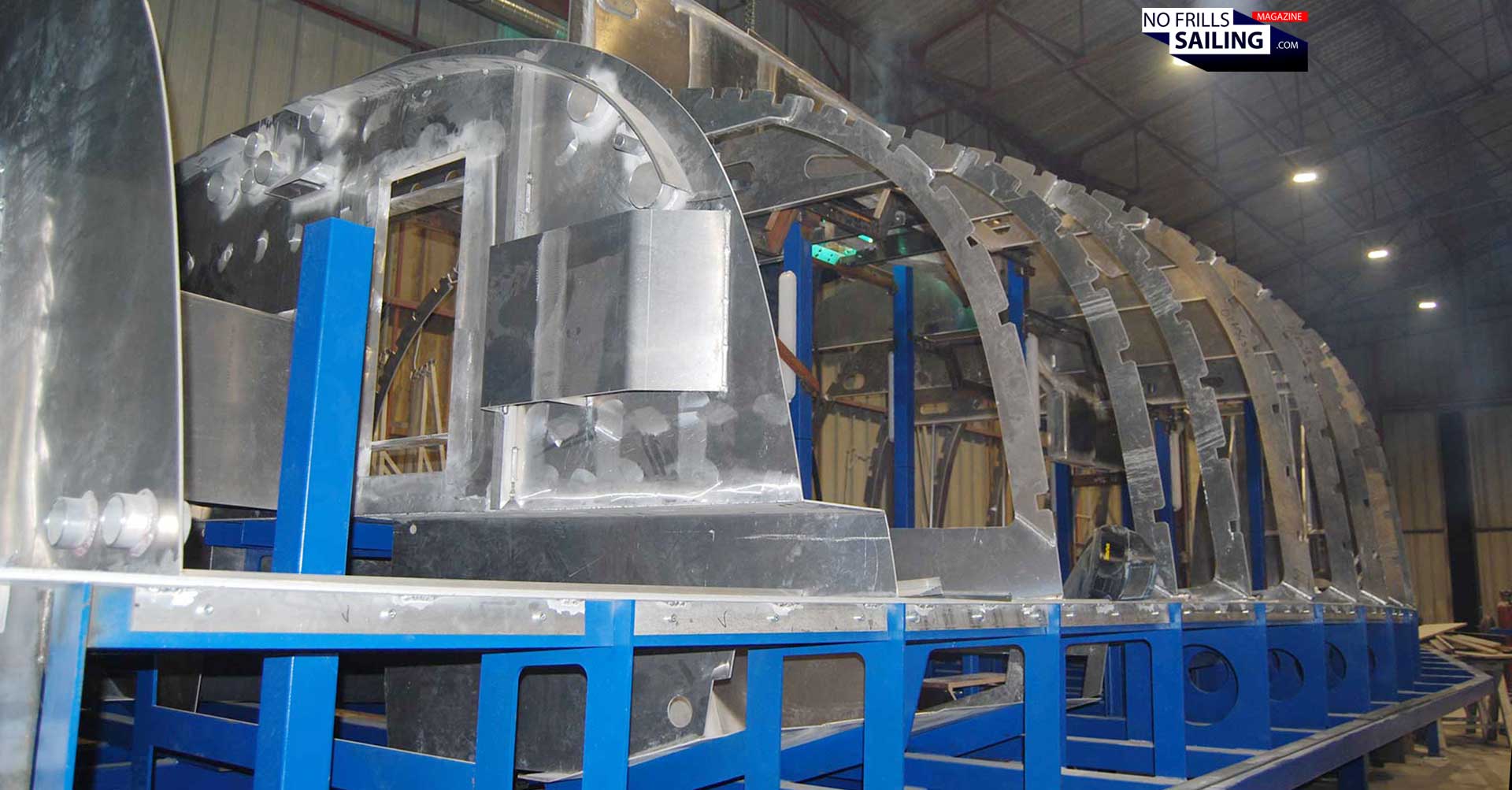
“For our yachts, both Allures and Garcia, we exclusively use aluminum from the 5000 and 6000 series.” So the highest quality for our boats? Antonio gets more specific: “The 5000 series, particularly the 5083, was specifically developed for marine applications. This alloy offers excellent resistance to saltwater corrosion.” Antonio explains that, for example, the 2000 series is much better suited for use in aviation. The series numbers are therefore not a quality grading, but indicate the usage preference. “The times of cheap aluminum are largely over in our industry,” says Antonio: In the past, other, not necessarily inferior, but different alloys were used: “The Meta shipyard, for example, used to work with Strongall, as far as I know. However, all the renowned shipyards I know now use aluminum 5083.”
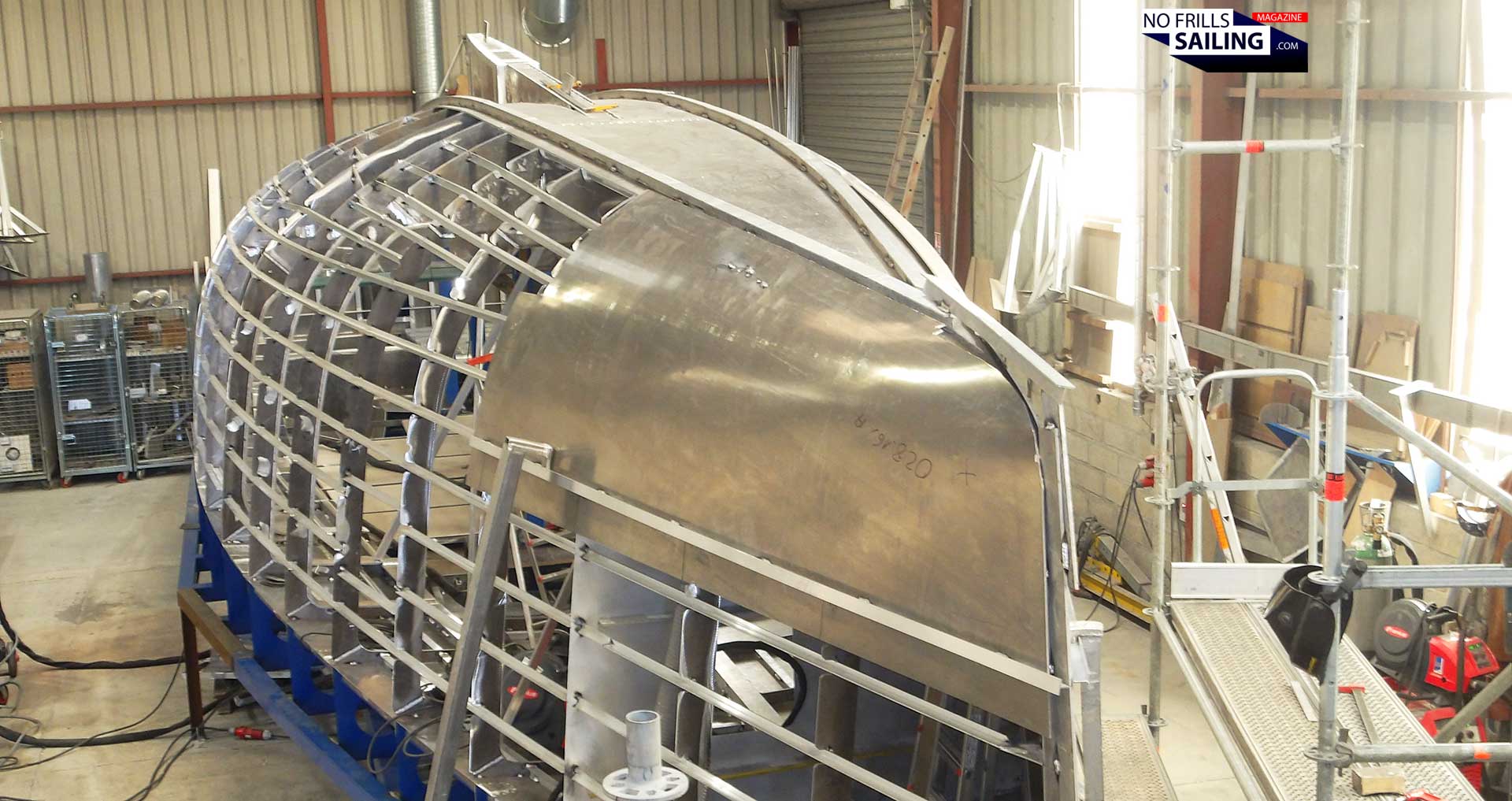
For certain areas on board the boats, however, aluminum from the 6000 series is better suited. For the profiles of the yachts, if you will, the basic framework or “skeleton,” Grand Large Yachting uses aluminum from the 6060, 6000, 6005, 6082 series, which then reinforce the hulls. Antonio says: “These are mainly areas that are exposed to higher local loads. The differences in these alloys lie mainly in weldability, corrosion resistance, mechanical strength, and aesthetic surface. Also, some alloys also require anodizing. Others, certain alloys are so special that not even we can weld them in our specialized workshops.” In any case, Antonio notes that the naval architects specialized in aluminum yachts take all this into account already in the construction plans where the types of alloys are noted. “However,” he says: “For the hull cladding, the outer skin, we always use aluminum from the 5000 series.” If you want to know more about this topic, I recommend this PDF.
On collision and ice safety: How thick should an aluminum yacht be?
That´s also a classic: It´s strange, but collisions suddenly become a thing once you talk about aluminum yachts. You’ve probably already read my various articles about sailing in the areas of the Northwest Passage or in the Arctic/Antarctic. For many sailors, this is really the fulfillment of an absolute life dream: Seeing majestic snowy landscapes with their own eyes, those huge icebergs, and the seemingly endless growler fields. It´s a craving many sailors suffer from. And of course, in such sailing areas, contact with ice is practically unavoidable: You shouldn’t do that with a plastic boat! But how thick and robust should an aluminum boat actually be so that you and your family can feel at ease?

“First of all: Our yachts are not icebreakers!” says Antonio: “We also recommend not deliberately steering into ice and certainly not trying to freeze and being trapped in it.” Some owners have done that and everything turned out fine – but those were usually absolute professionals, like Jimmy Cornell. An Allures or Garcia does not have an ice class (as no other yacht has it), even though this one also comes up again and again in forums. An official ice certification is only possible for ships from 24 meters in length anyway. Even commercially used large sailing yachts that operate in ice can only be certified by Lloyd’s & Co from 300 gross register tons: Those are then ships with 30, 40 meters in length. Anyway: “For our boats, any sailor can rely on a significantly higher safety when collisions happen.”

Antonio gives a bit more insight into the hull construction of their Grand Large aluminum yachts: “If you want to know exactly, I can say that in the bottom area, 10 millimeter thick plates are used, then 8 and 6 millimeters above that, and for the upper freeboard, where contacts are rather unlikely, we use 5 millimeters thick plates.” So there’s always at least half a centimeter of solid metal between you and the ocean: And that’s a whole lot of resistance! “As for the “primary skeleton” of the boats, the material thickness varies here too: After all, we also want the boats to remain as light as possible to still sail fast. For the reinforcements in the keel area, the bottom parts, frames, and deck beams, the aluminum beams are between 1 and 1.2 centimeters thick,” Antonio continues. And that, I think, sounds impressively strong!
So how does a GRP hull behave in a collision vs. an aluminum boat?
Anotger FAQ comes up rather often. How do plastic boats and aluminum yachts behave in collisions, what´s the difference and which is safer? There must be studies or official certificates, I do ask Antonio. He says: “First, about collisions: From a mechanical point of view, the higher elasticity of aluminum allows for a fundamentally greater deformation of the material before it fails. In complete contrast to plastic, like GRP composites, which are stiffer and therefore less flexible. These usually tear or break very suddenly under force.” Clear message.

Damage patterns from real life mishaps confirm this: “Aluminum hulls that have collided with floating objects (UFOs) like pallets, branches and trunks, or even containers, have deformed. But they rarely tear.” You probably know this from one marina or another when you see an older aluminum yacht: The dents at the bow or also at the widest point of the hull are a testament to how well the material absorbs impacts. They are not pretty, but better than holes, right? Antonio continues: “Also worth mentioning: Our marine aluminum from the 5083 or 5086 series has a mechanical strength of 270 to 350 MPa (Megapascal, a unit to measure pressure). That’s two to three times higher (!) than the pressure resistance of polyester composites, which are usually only at 80 to 150 MPa.” Any more questions?
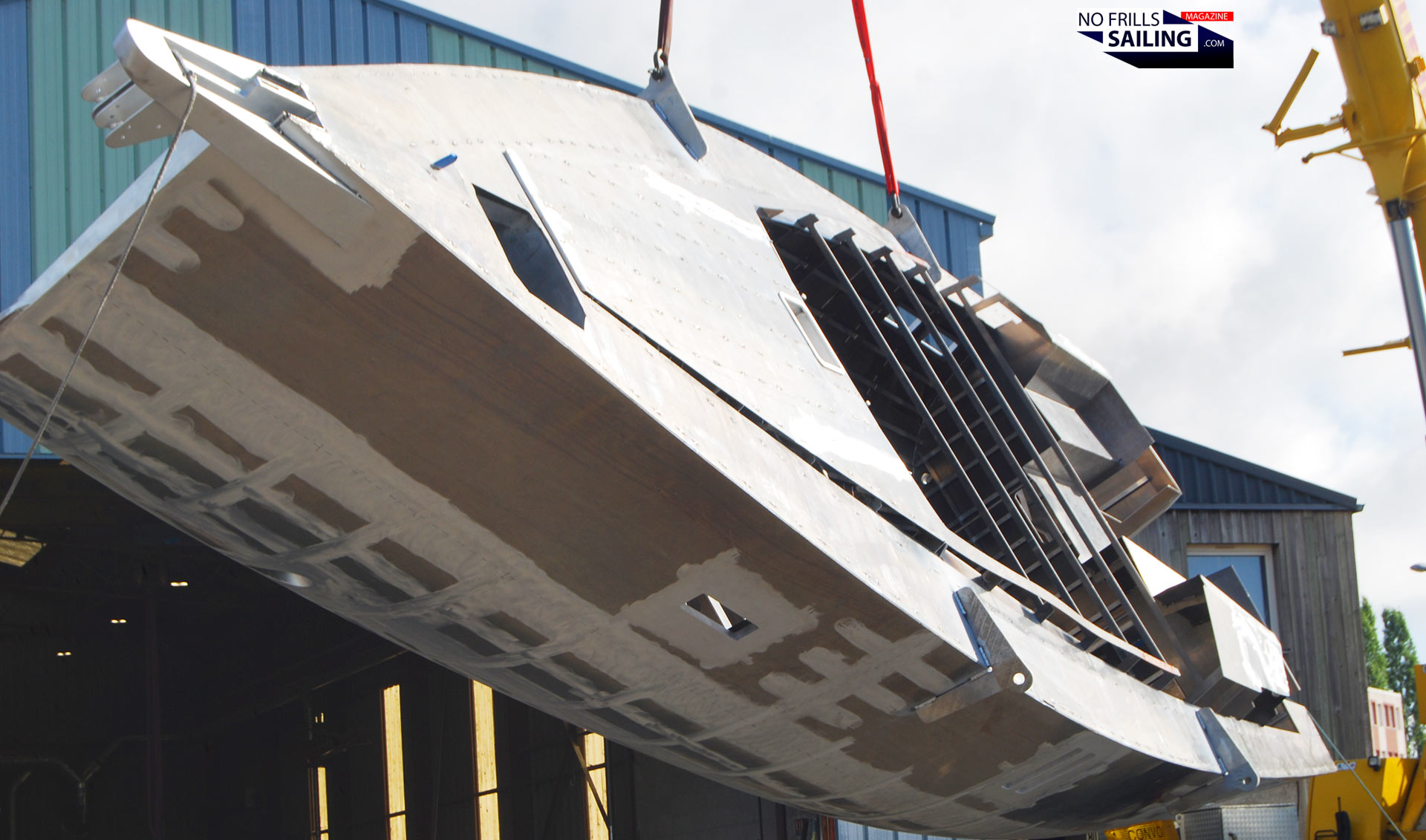
On the topic of certificates and classification, Antonio says that for all recreational yachts, the CE class is the same threshold. “Our yachts are of course all CE-certified and comply with standards that define their design category. There’s often a lot of confusion here, because the CE classes actually only distinguish one thing: Namely, for what kind of conditions of the ocean a yacht is intended, which it can safely handle.” Sailing yachts like Garcias or Allures are all certified for CE Design Category A and thus for winds over Beaufort force 8 and waves over 4 meters. “Exceptions are of course extraordinary conditions like hurricanes, severe storms, or freak waves,” says Antonio
How easy (or difficult) is it to repair an aluminum yacht?
Antonio can soothe and reassure aspiring aluminum skippers: “Aluminum can be repaired almost anywhere. You just need the right welder and a good power supply! Because a big advantage of aluminum is that practically any skilled welder can perform at least temporary repairs without having to be a trained or even skilled boat builder.” And you can find those everywhere in the world, in car garages for example. Antonio tells that even in cases where the hull was pierced, very simple waterproof aluminum “patches” can be applied over the damaged part without having to interrupt your world trip or expedition.
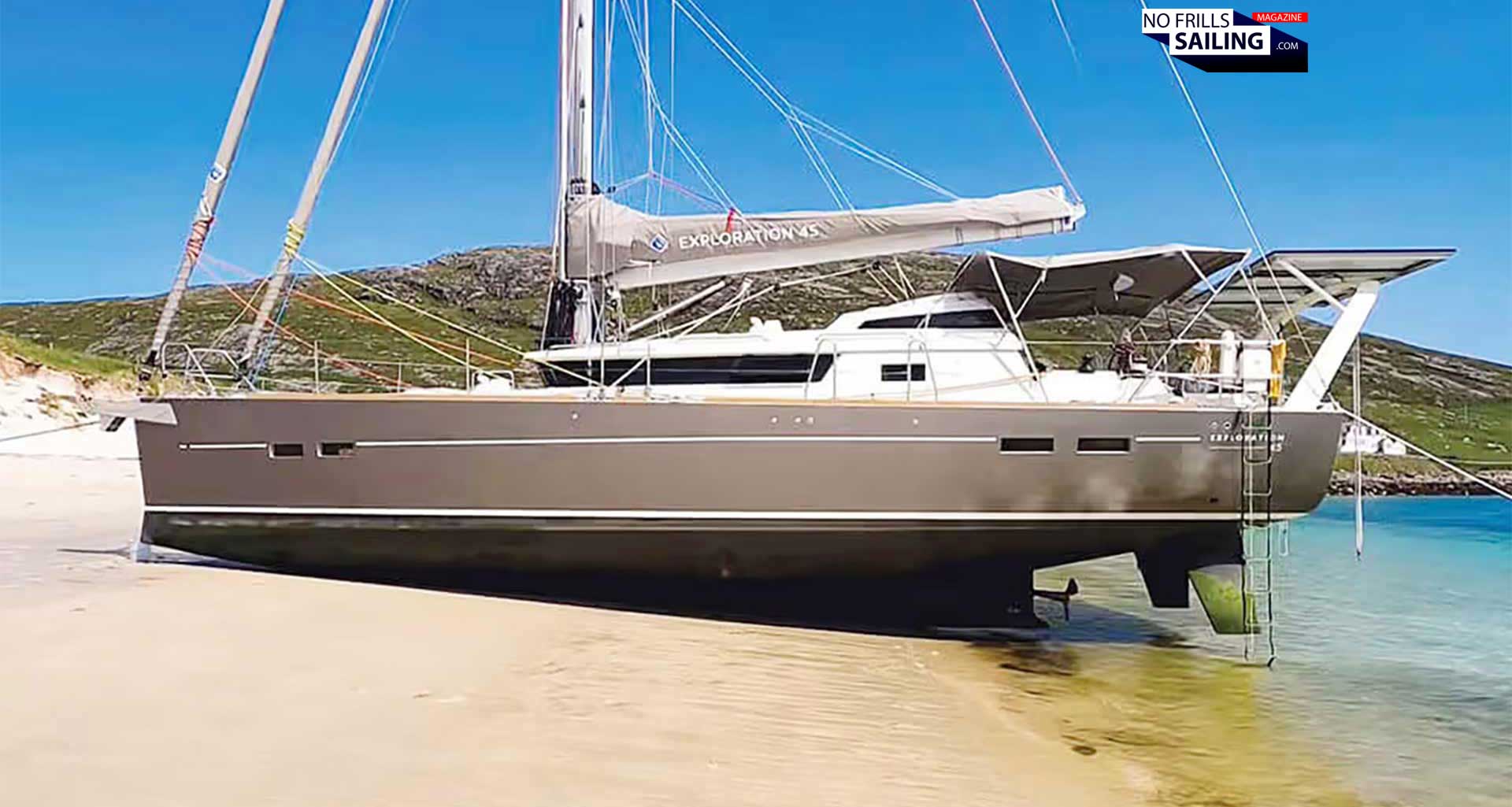
“The basic tools for this are of course a welding machine and an angle grinder. You don’t need special 2K resins, fiberglass mats, chemical catalysts, or grinding equipment to restore the original structural strength,” says Antonio. Repairs of GRP hulls require a lot of specialized knowledge and complex work steps, which should best be carried out only by professionals, especially if the complex laminates or even the sandwich structure is damaged. And this all may only happen within very specific conditions regarding temperature and humidity. Clearly an advantage for aluminum, I think. “Basically, aluminum is welded with two techniques: MIG or TIG,” says Antonio.
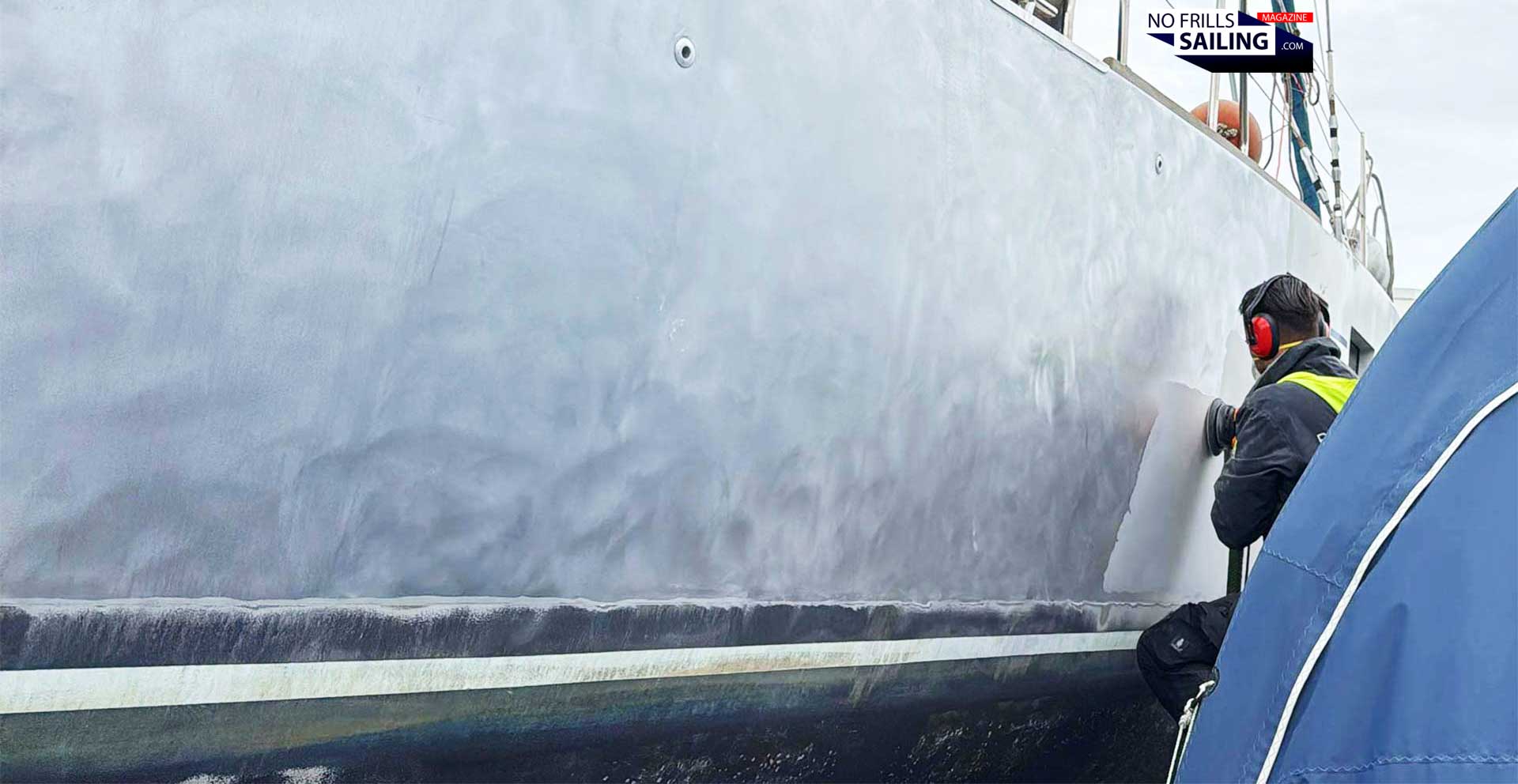
For MIG welding (Metal Inert Gas), a non-combustible gas, in our case Argon, is used to obtain a nice and clean weld seam. Because when welding in open air, the gases that make up our atmosphere can contaminate the weld seam. In addition, filler metal is automatically fed during the process – which is then called “semi-automatic welding.” Antonio says: “MIG welding is fast and well-suited for thick aluminum sections. It’s also easier to learn when you’re a beginner.” It’s a bit different with TIG welding. Argon is also used as the gas here, but the metal is manually added manually with a rod. “We use the TIG method mainly for precision welds. It’s cleaner and also much more aesthetic than MIG.” About 90% of a Garcia or Allures hull is welded with MIG, TIG is reserved for technical or aesthetic welds, Antonio discloses.
Why it is worth investing in quality when it comes to aluminum yachts.
Last not least, the discussion about price and budgets. Many people feel that the price difference between an aluminum yacht and a GRP boat is enormous. Of course, comparing an Allures to your ordinary series production cruiser made from GRP reveals a large gap. But You should compare apples with apples here, right? Allures or Garcia are luxury yachts which should rather be compared with Hallberg-Rassy or Amel. If you do, the surprise is often big, because price difference is virtually nil. “But our boats go anywhere”, Antonio says. On the other hand, between aluminum brands, there indeed are some gaps.
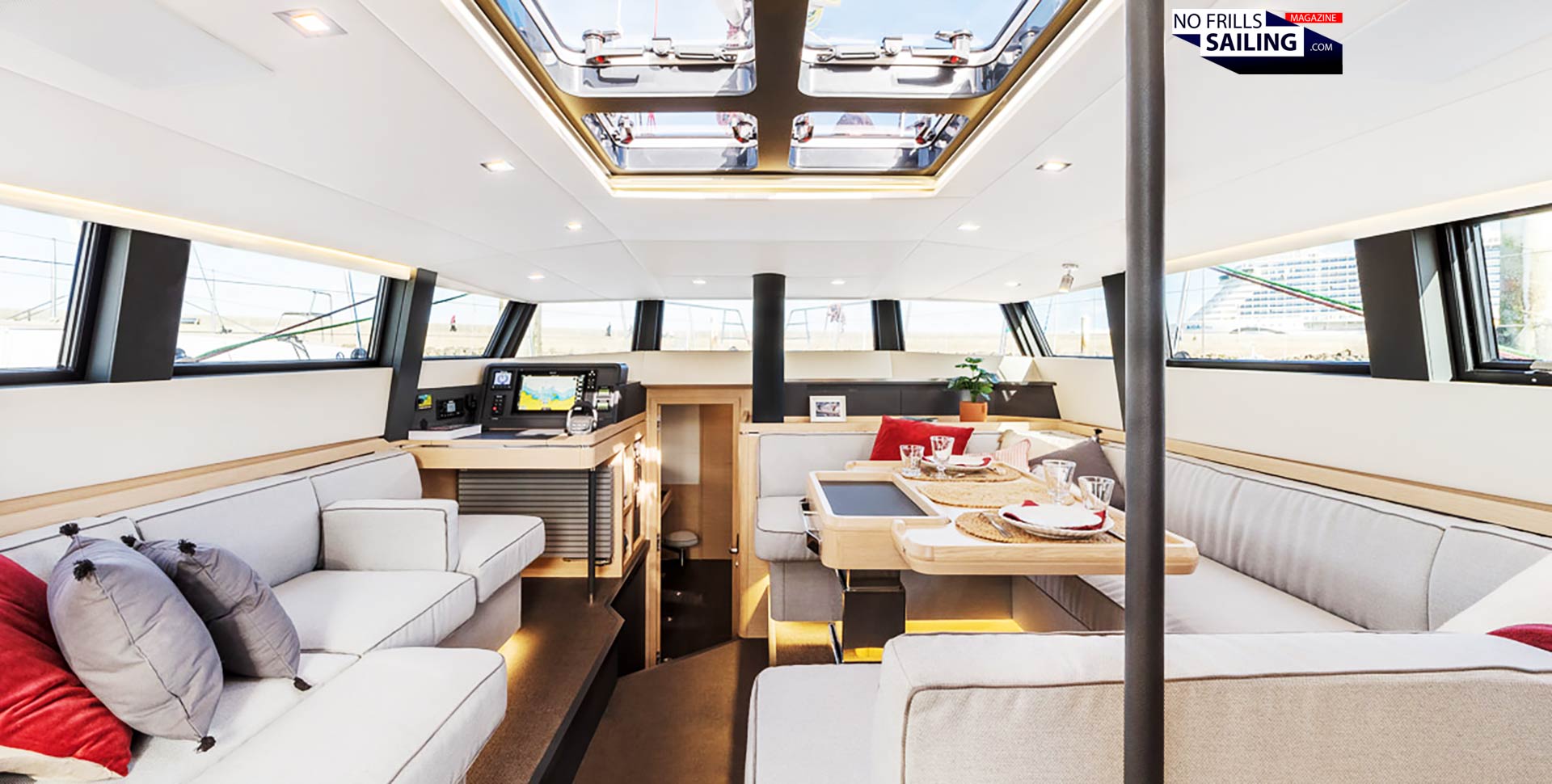
Some boatbuilders, like Alubat with their Ovni, make hard chined hulls. The hull is welded together by only five to eight large longitudinal panels. A particularly simple and time-saving method of producing a hull. Hence, it´s of course much more elaborate to work out a smooth round shaped hull. I ask Antonio about this: “It’s hard to give an exact number since I haven’t built a hard-chine hull myself. But it’s true that making chined hulls is generally considered less labor-intensive than our elaborate – and also very aesthetic – hulls.” To be clear: Hard chined hulls are not less safe, however, you may already see with your eyes that such a hull may behave a bit different hydrodynamically – hence in its sailing characteristics and speed – and may not be able to keep up with a smooth round hull. At least that’s what I think. So, yes, that may explain price differences from one aluminum-brand to another.

And then there´s the high prices for used aluminum yachts. Even 10, 20 years old Ovnis still achieve a staggering prices on the market. That´s something GRP-boat owners may envy. The resale value of an aluminum hull is much higher. This often makes the decision between a used and a new build boat easier because the gap isn´t that big. On the other hand, investing in your aluminum boat knowing that resale value won´t depreciate that fast is an overall clever decision, even if the target group is also smaller. I know this myself very well, having looked extensively into buying a used Allures 44 a few years ago seriously considering to buy one, shocked by the still high budgets needed.
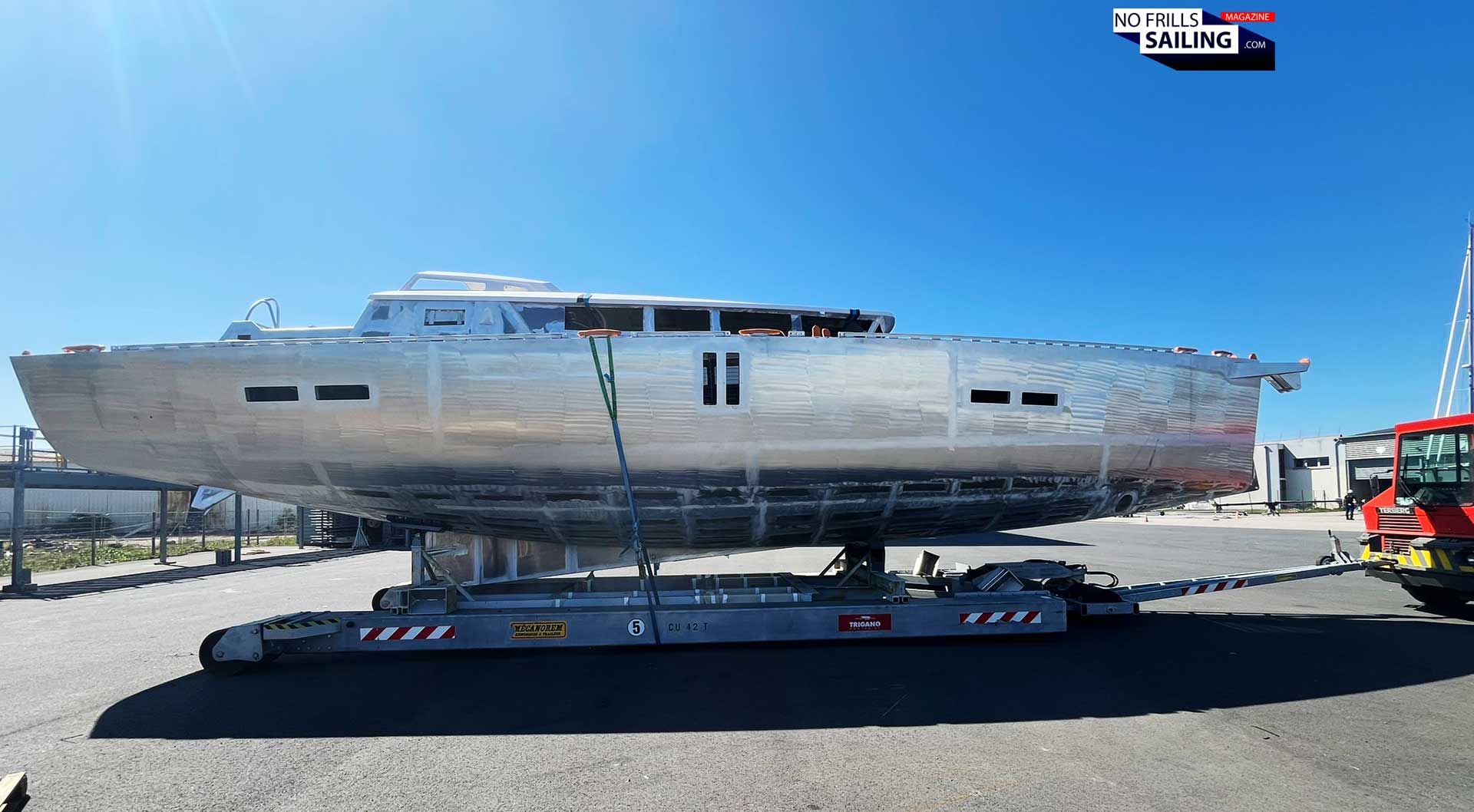
“It’s also definitely worth mentioning in your article that aluminum is 100% recyclable!” Antonio Costa adds: “GRP can currently only be shredded and burned, at best processed into road surfacing. An aluminum yacht – well maintained – remains durable practically eternally.” The material makes the difference! As an owner of an aluminum yacht, you can not only enjoy increased safety and unmatched stiffness when sailing, but also top value retention.
Thanks so much, Antonio! I hope I can meet you in person soon when coming to the shipyard in Cherbourg.
Articles on aluminum yachts which may also interest you:
Luxploration: When luxury meets a true exploratory vessel
GRP vs. aluminum in detail: Rudder trunk comparison
Let there be light: On the brand new Allures 47 Horizon
